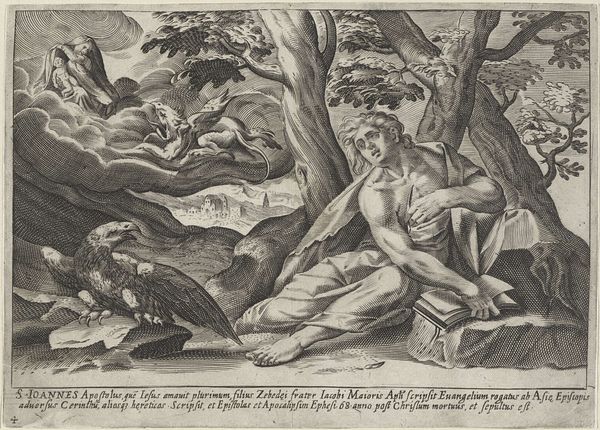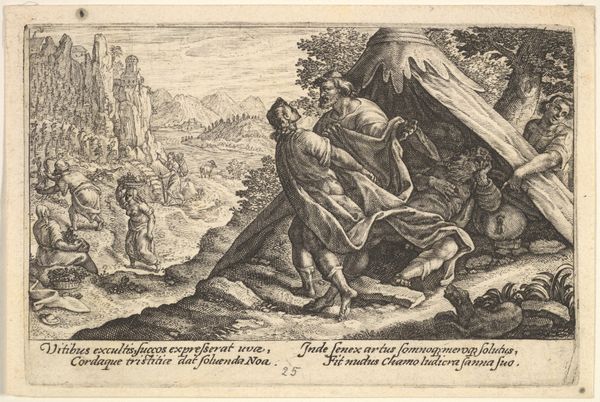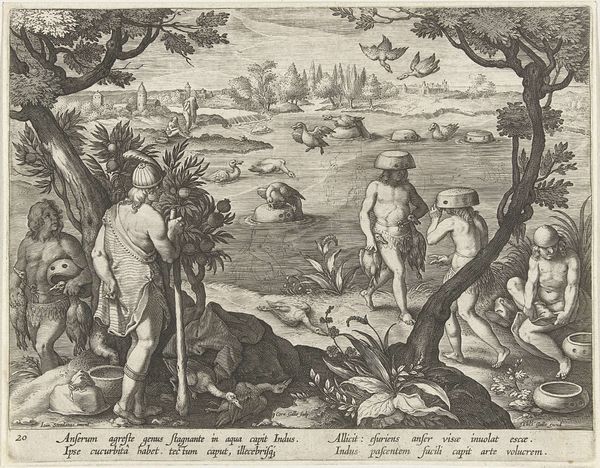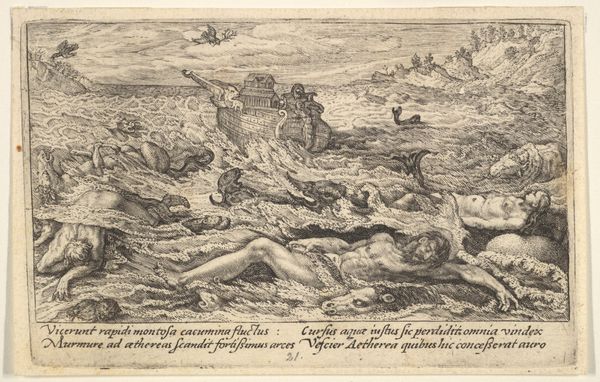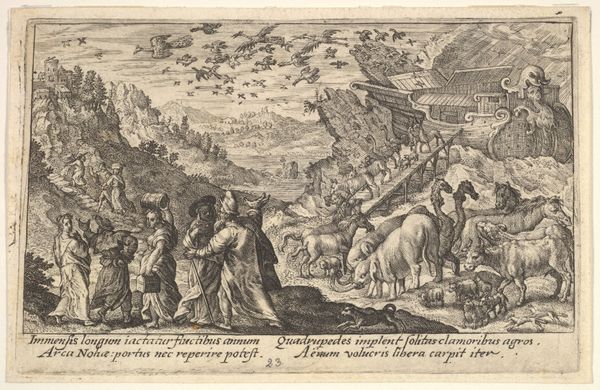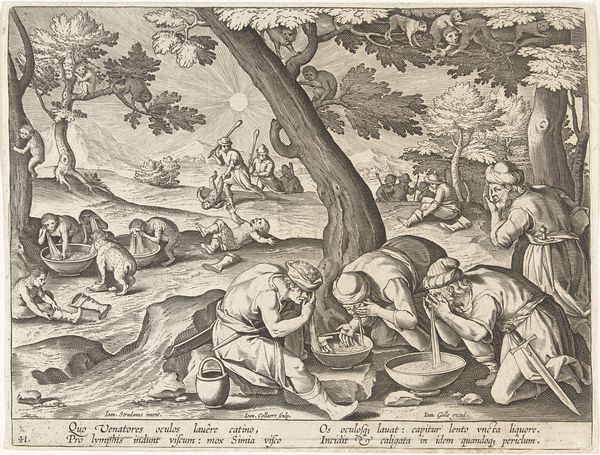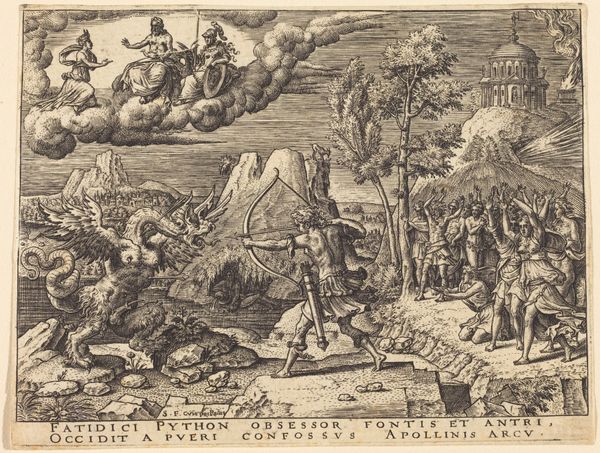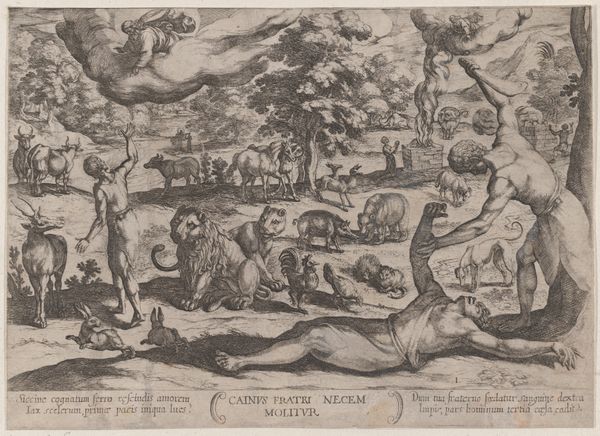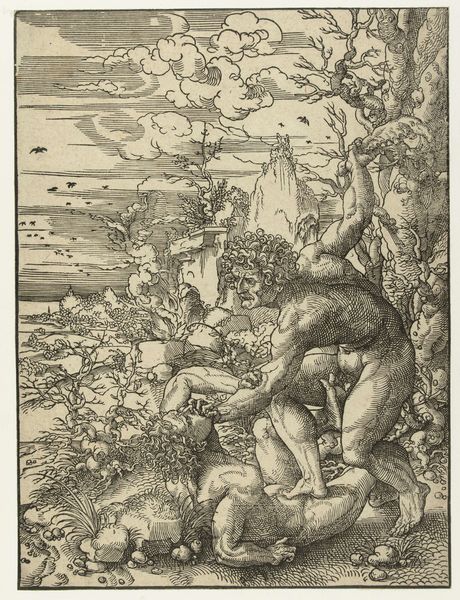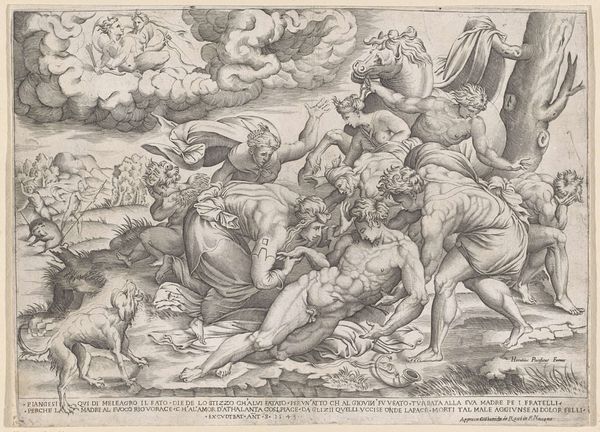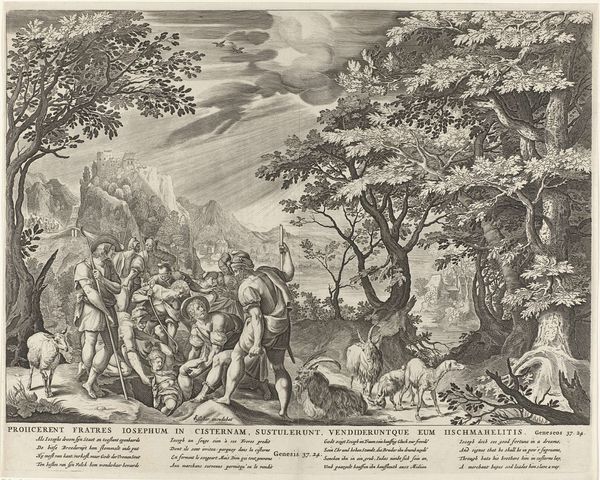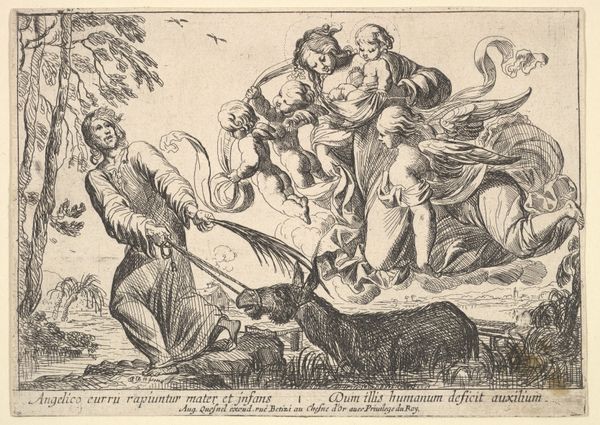
Aftermath of the Flood: human bodies strewn on dry land in the foreground, Noah's ark moored on a rocky outcrop beyond, from "Liber Genesis" 1612
0:00
0:00
drawing, print, engraving
#
drawing
#
ink drawing
#
allegory
# print
#
landscape
#
mannerism
#
figuration
#
form
#
history-painting
#
nude
#
engraving
Dimensions: Sheet: 3 1/2 x 5 5/16 in. (8.9 x 13.5 cm) Plate: 3 5/16 x 5 1/16 in. (8.4 x 12.9 cm)
Copyright: Public Domain
Editor: Here we have "Aftermath of the Flood" by Crispijn de Passe the Elder, created around 1612. It's an engraving, and it's... pretty grim. The foreground is filled with bodies, and in the distance, we see Noah's Ark perched on a rocky crag. What strikes you about this piece? Curator: The image functions as a powerful piece of propaganda reflecting anxieties around social order. Think about it – what’s more terrifying than societal collapse? Here, De Passe visualizes that fear, using the biblical story to remind viewers of the divine punishment for moral corruption. It served as a visual warning, a reinforcement of established social norms and religious authority. Notice how the ark, representing salvation, is small and distant, while the corpses are large and immediate, driving home the consequences of sin. Editor: So, it's less about religious hope and more about social control? I hadn’t really thought of it that way. Curator: Precisely. How is it distributed, and who has access? Engravings allowed for wider circulation of images, making this "lesson" available beyond elite circles. The very act of witnessing this destruction was meant to encourage moral rectitude in the viewer. Consider the institutions-- the Church-- who are likely the distributors and financiers of this kind of imagery. Editor: That’s fascinating. I was so focused on the drama of the scene, I missed the wider political and social context. It’s more than just a biblical illustration; it's a commentary on the artist's world. Curator: Exactly! Understanding the public role of art during this period allows us to see it for much more than just aesthetic or even religious expression. Editor: This has given me so much to consider about art and power. Thank you!
Comments
No comments
Be the first to comment and join the conversation on the ultimate creative platform.
